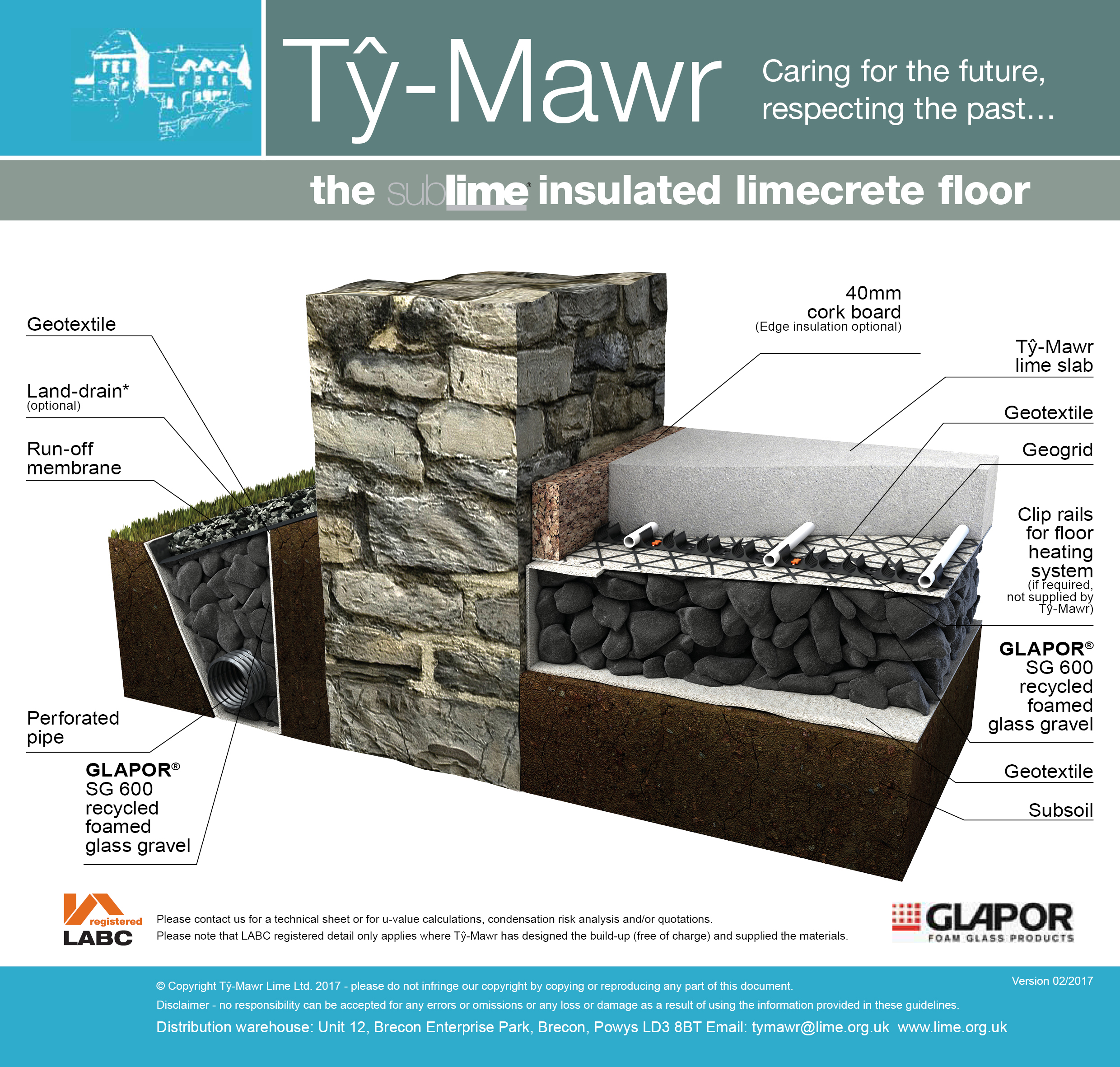sublime® Insulated Limecrete Floor
 Our original motivation in the mid-1990s was to develop a flooring system to replace the earth and broken flagstone floor in our Georgian kitchen. We already understood the importance of 'breathing' buildings and the role of lime in achieving this in old buildings and so we did not want to interrupt the way in which the building dealt with moisture by putting in a hard, dense, cold slab of concrete so we began to look at the alternatives...limecrete (a blend of hydraulic lime and aggregate) provided an ideal solution, we also wanted to install underfloor heating and so it was important to insulate the floor and provide a screed for the pipes to run through.
Our original motivation in the mid-1990s was to develop a flooring system to replace the earth and broken flagstone floor in our Georgian kitchen. We already understood the importance of 'breathing' buildings and the role of lime in achieving this in old buildings and so we did not want to interrupt the way in which the building dealt with moisture by putting in a hard, dense, cold slab of concrete so we began to look at the alternatives...limecrete (a blend of hydraulic lime and aggregate) provided an ideal solution, we also wanted to install underfloor heating and so it was important to insulate the floor and provide a screed for the pipes to run through.
Over the years, we have slowly refined the flooring system and the materials we use. We particularly wanted to help others, like ourselves, minimise the impact of their building on the environment.
Concrete is the most common construction material used in the world and is second only to water as the most consumed substance in the world. Every year, almost one ton of concrete is produced for every human on the planet which is staggering!
Cement is, of course, the principal ingredient in concrete and producing one tonne of cement results in the emission of approximately one tonne of CO2, accounting for approximately 7% to 8% of CO2 globally. The cement industry has made significant progress in reducing CO2 emissions through improvements in process and efficiency, but further improvements are limited because CO2 production is inherent to the basic process of calcinating limestone.
Lime too is burnt, but at a lower temperature and re-absorbs some of the carbon dioxide given off during burning whilst it is curing in the wall/floor but importantly it allows the floor to be recycled at the end of its useful life! This also helps to address some of the concerns we have about the level of construction waste going to landfill, in the UK this is currently 70-80 million tonnes per year – completely unsustainable!
To obtain a quote for your required U-Value, please see our online Calculator
